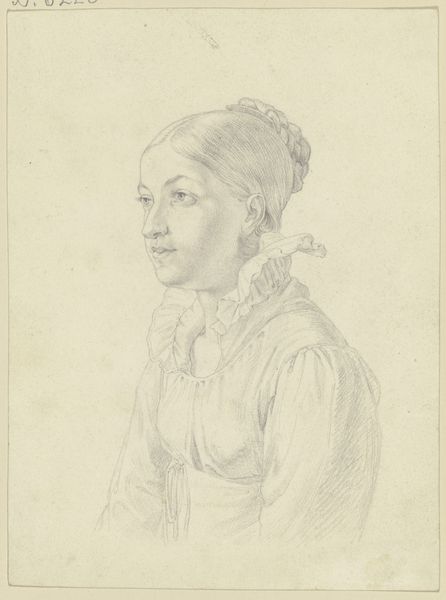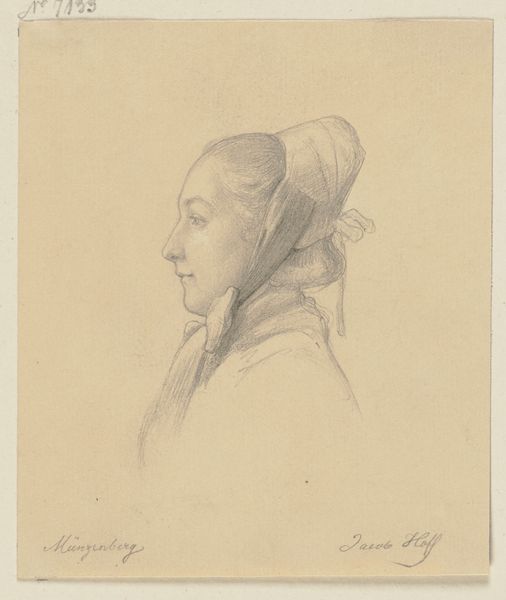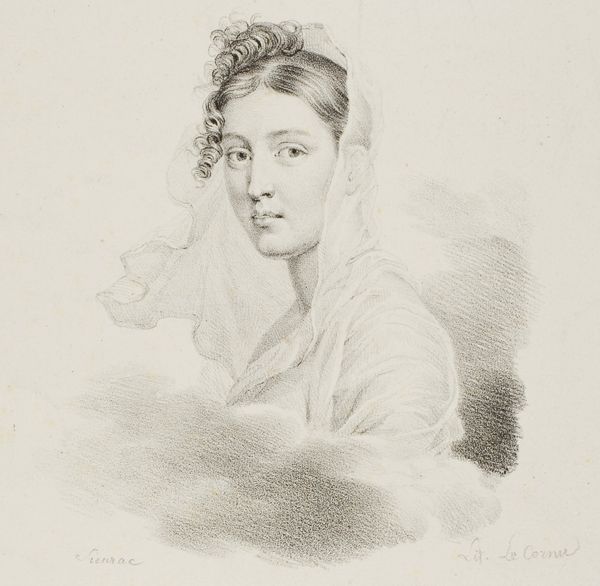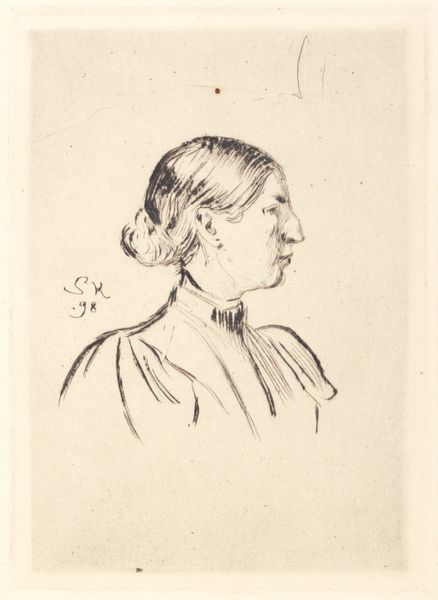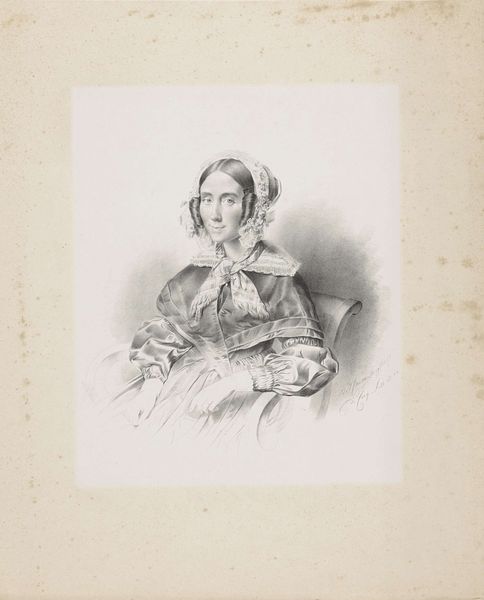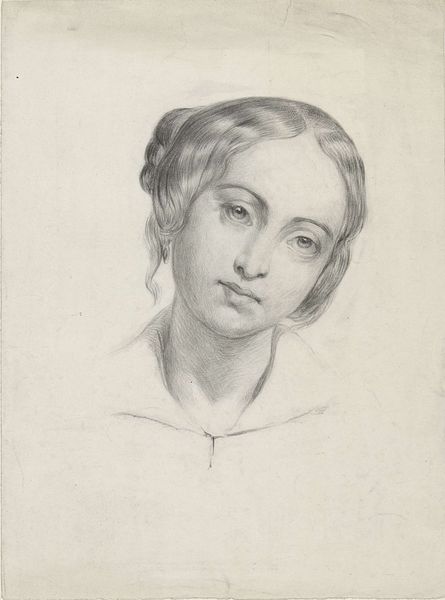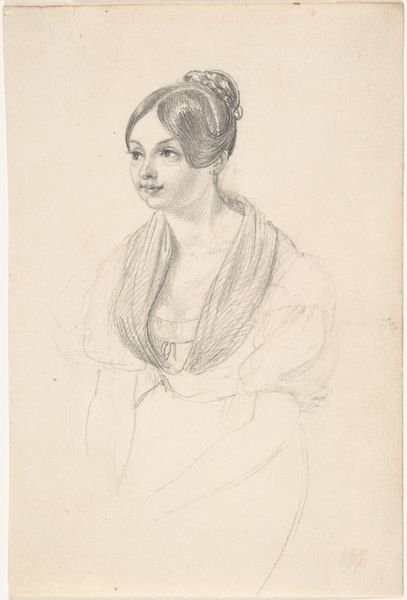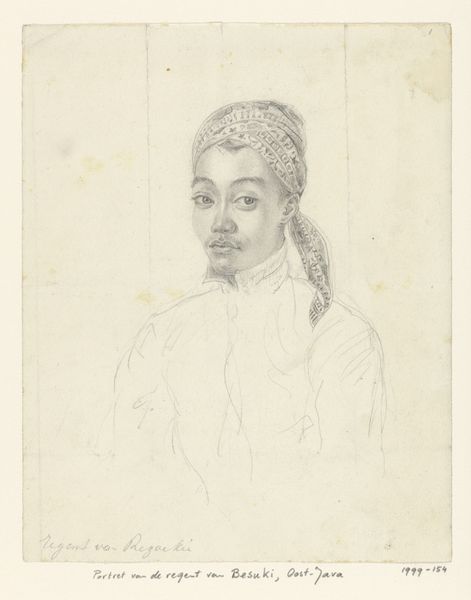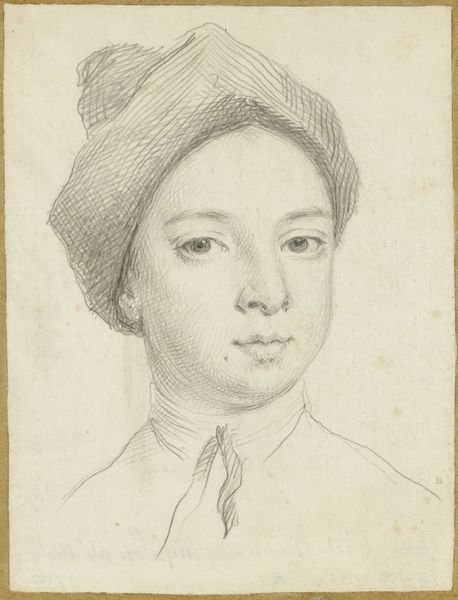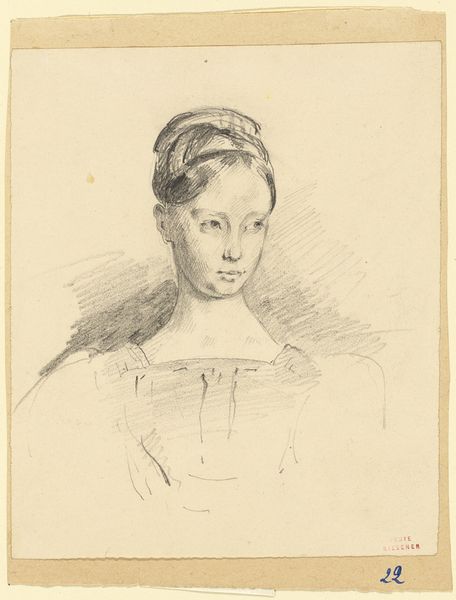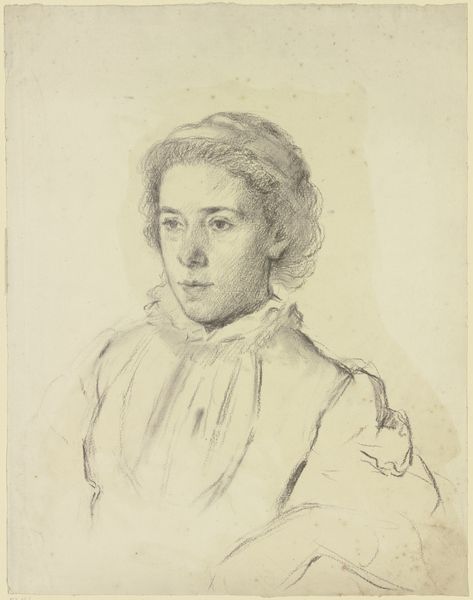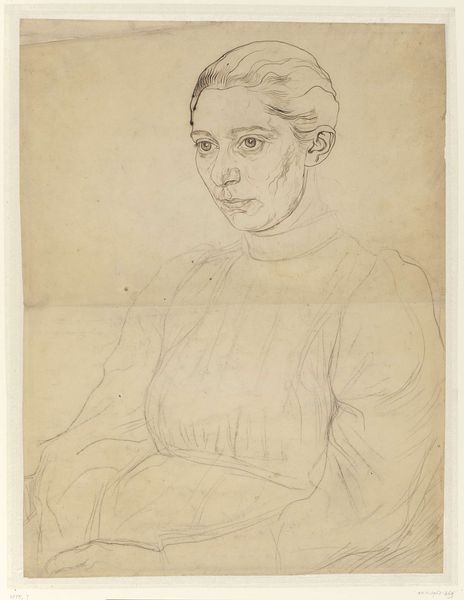
drawing, pencil
#
portrait
#
drawing
#
pencil drawing
#
pencil
#
portrait drawing
#
realism
Dimensions: 224 mm (height) x 162 mm (width) (bladmaal)
Editor: Here we have Wilhelm Marstrand’s "Head of an Italian Woman," a pencil drawing from 1838. I’m struck by how delicately he renders the fabric of her headdress. What stands out to you about this piece? Curator: What I notice is the interplay between the relative cheapness of the materials - simple graphite on paper - and the perceived exoticism of the subject. Consider the social context: who had access to these materials, and who was being represented? This isn’t just a portrait; it’s a record of artistic labor and the visual consumption of another culture. Editor: So, you're saying the drawing itself is a product of a particular power dynamic? Curator: Precisely. The paper itself, the pencil – where did they come from? Who manufactured them, and under what conditions? And how did Marstrand gain access to this "Italian Woman," and what does her representation here signify? Editor: That’s fascinating. I was just appreciating the artistry, but thinking about it as a material object shifts my understanding entirely. Curator: And think about its afterlife! This drawing exists now in a museum, mediated by curators, viewed by us. How does its meaning continue to evolve through its interactions with new materials and audiences? Editor: I never considered that the journey of the materials – from raw resources to the finished piece – could be as significant as the image itself. It definitely adds a layer of complexity. Curator: Indeed, and it challenges the traditional view of art as purely aesthetic or expressive. The materials, the making, and the mode of distribution all contribute to the artwork’s significance. Editor: Thanks. It makes me rethink how I approach art, going beyond just looking at the subject in the artwork, to appreciating the tangible history it embodies.
Comments
No comments
Be the first to comment and join the conversation on the ultimate creative platform.
